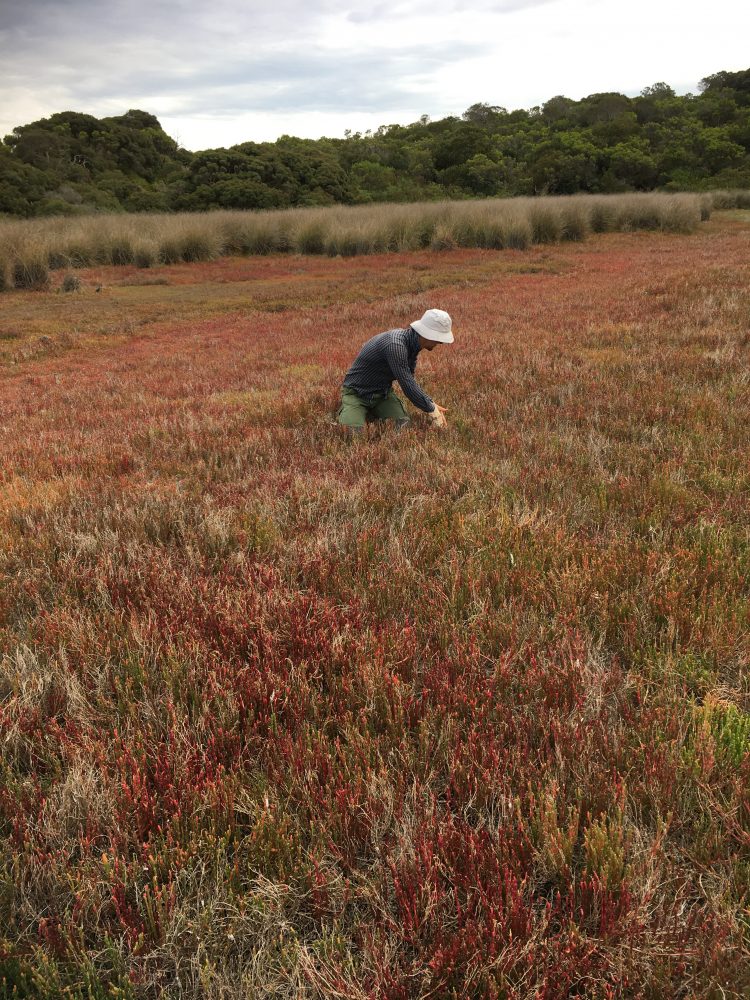A great breeding season leads to high numbers of migrating Orange-bellied Parrots
Orange-bellied Parrots (OBPs) have just started their journey to their winter habitat on the mainland. After an excellent wild breeding season in Tasmania the numbers of migrating parrots are higher than what they have been for the last 10 years. A controlled burn in 2017 to enhance breeding habitat at Melaleuca appears to have led to some positive results with an increase in abundance and productivity of native food plants observed this year. Several OBPs have been observed feeding on the seeds of native plants in addition to supplementary food offered on feeding tables.
The 20 nests this year have produced at least 37 fledglings with the highest body condition recorded since 2013. The captive breeding season was also successful and the five breeding facilities have produced a total of over 200 fledglings. Later in the breeding season 49 captive bred juveniles were released to the breeding grounds in Melaleuca to boost the wild population, leading to almost a 100 juveniles within the breeding ground at the end of summer. As a result of these strong fledgling numbers it is predicted that over 100 adult and juvenile OBPs will be travelling north to the mainland this year – and we very much hope there will be ample habitat for some of these birds to visit in the south-west of Victoria.
So, while we were all excited about having a slightly better chance of spotting an OBP in south-west Victoria this year the Covid-19 pandemic has thrown a little spanner in the works.
It is with disappointment that the Orange-bellied Parrot Recovery Team has decided to cancel, until further notice, volunteer surveys of OBP non-breeding habitats in 2020, due to the pandemic. It is important that all community members adhere to government advice to limit the rate of spread of this virus, which includes not leaving your home for non-essential activities.
While OBP autumn and winter surveys are important, they are not considered essential given the current circumstances. We’ll just have to trust that the birds will do okay, even if we don’t catch a glimpse of them. However, with these restrictions in place it is more important than ever that landowners with suitable habitat and other people who may still be out and about when working or doing their other essential tasks keep an eye out for the elusive OBP.
For this reason, we will create a few short informative videos over the winter season with some helpful tips regarding suitable habitat, identifying an OBP and to inform what else is going on in the recovery efforts. Please send me an email if you are interested in receiving these videos throughout the season.
We have also started the collection of beaded glasswort (Sarcocornia quinqueflora) for the recovery team’s planned Nutrient Analysis. We are hoping by analysing the nutrient content of native food plants we will be able to improve the supplementary food offered to wild and captive birds and therefore hopefully be able to improve their body conditions to give them the best possible starting point to their long migratory journey.

Seed collection in full swing! Left: a great seeding season for Beaded Glasswort (Photo: L.Kivisalu). Middle: the cleaning of the tiny glasswort seed takes patience and time (Photo: L.Kivisalu). Right: volunteers helping clean seed from home (Photo: K.Height).
While we weren’t able to take volunteers out for the seed collecting, we’ve had an amazing response from our volunteers and have had plenty of hands helping with the seed cleaning from home. A huge thank you to everyone who offered their time and patience! So far our seed collecting season has been amazing and we are hoping that the winter searches and parrot sightings in south-west Victoria will just be as successful this year.
This project is supported by Glenelg Hopkins CMA and the Department of Environment, Land, Water and Planning through funding from the Australian Government’s National Landcare Program.

